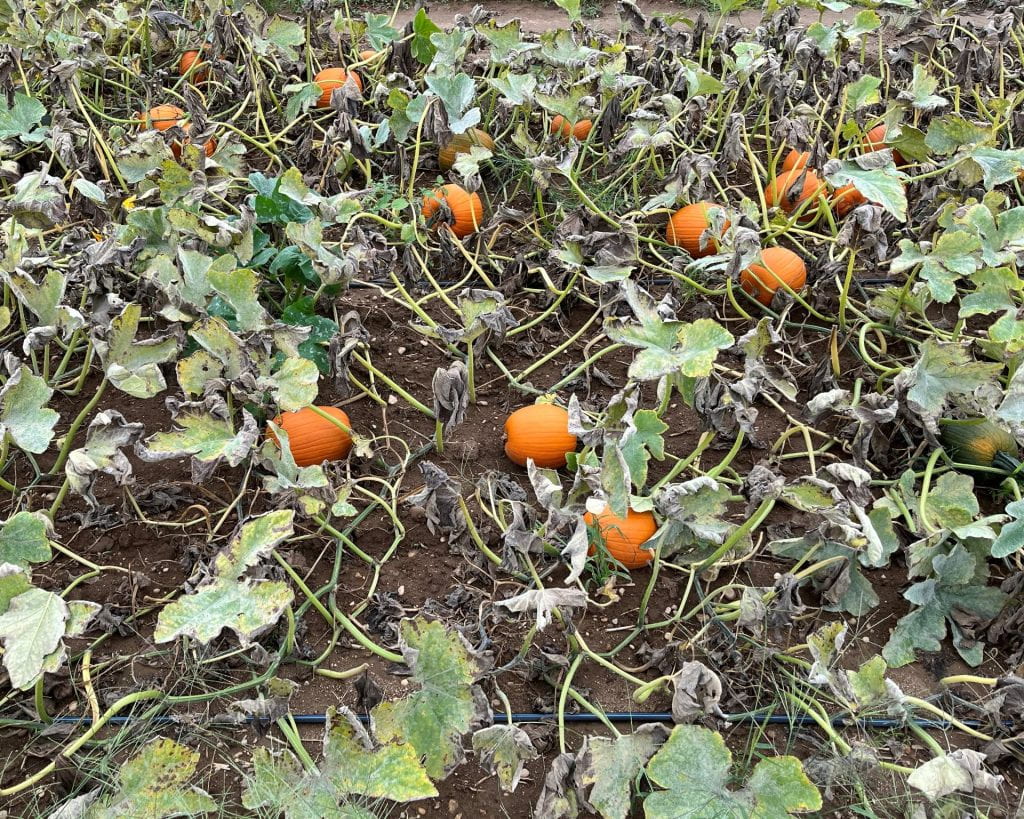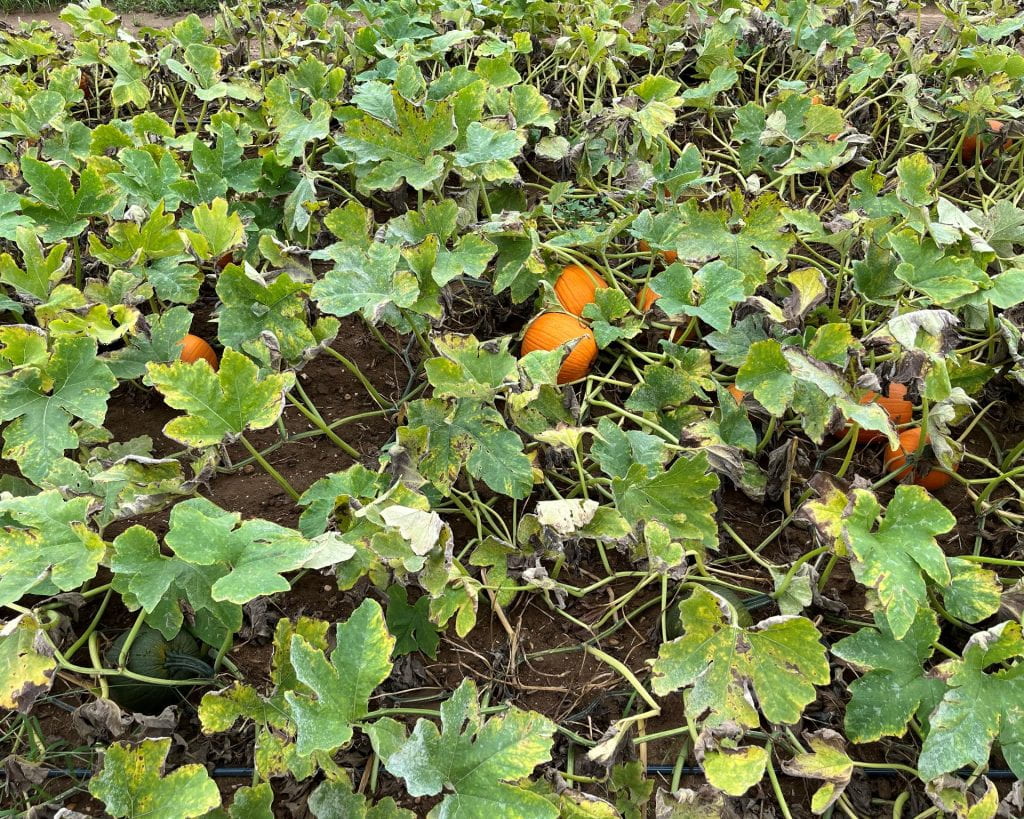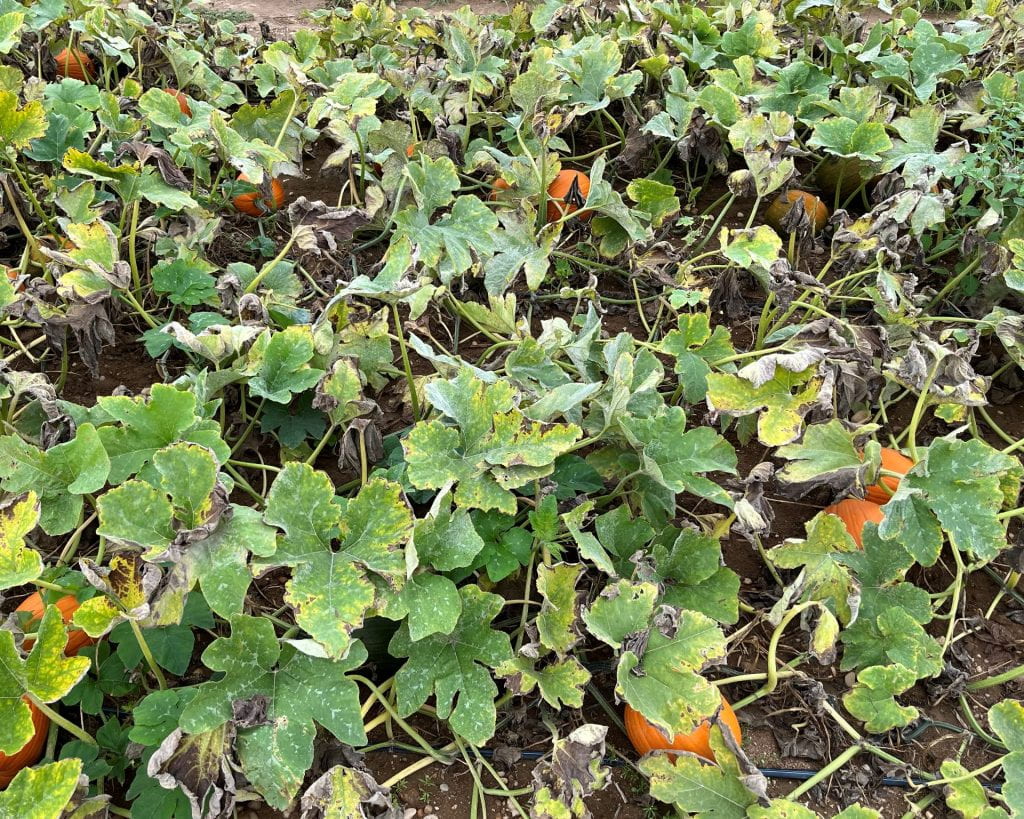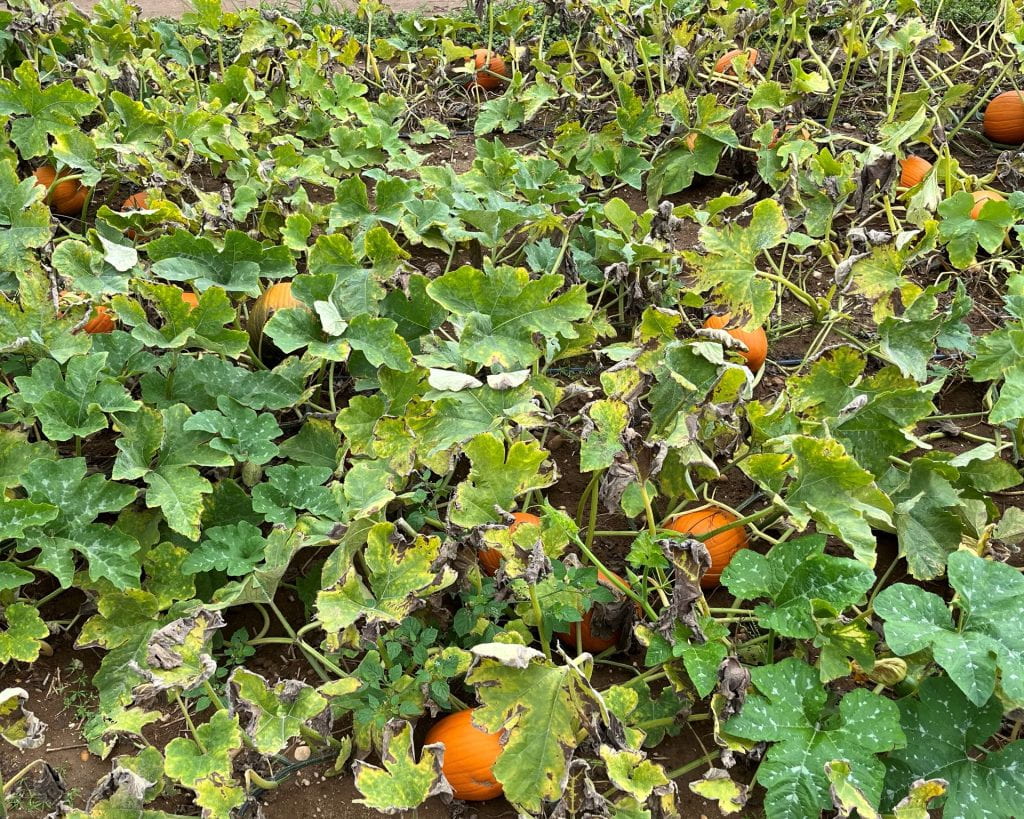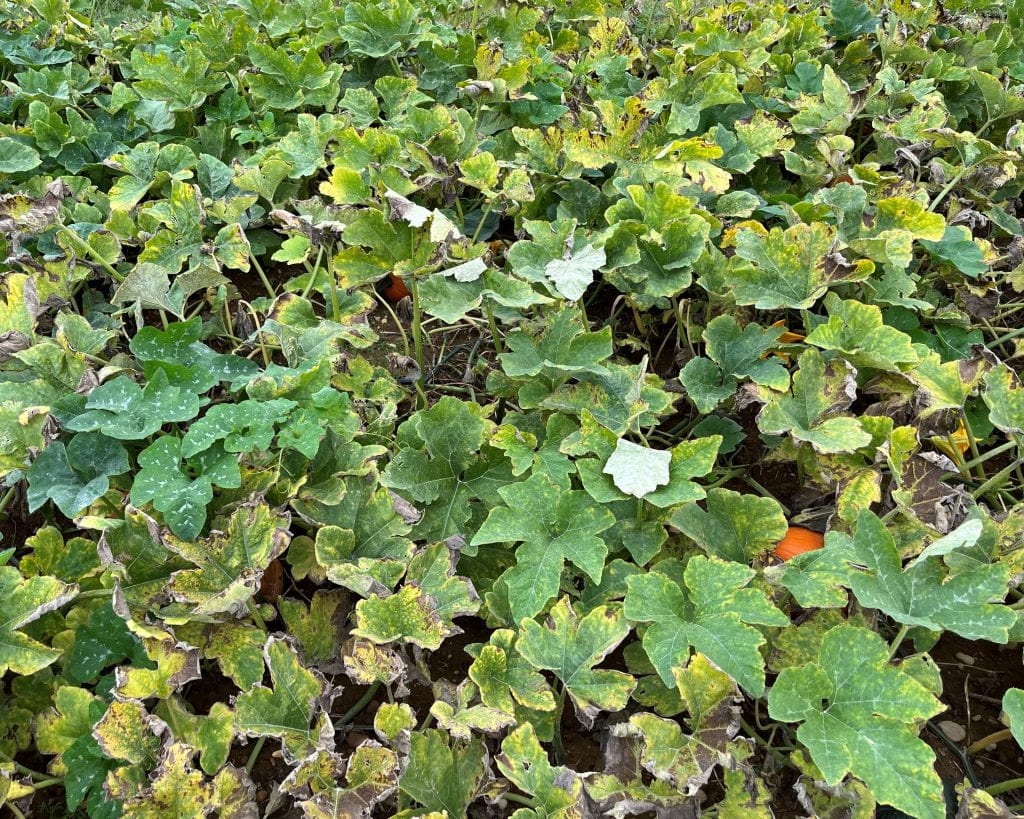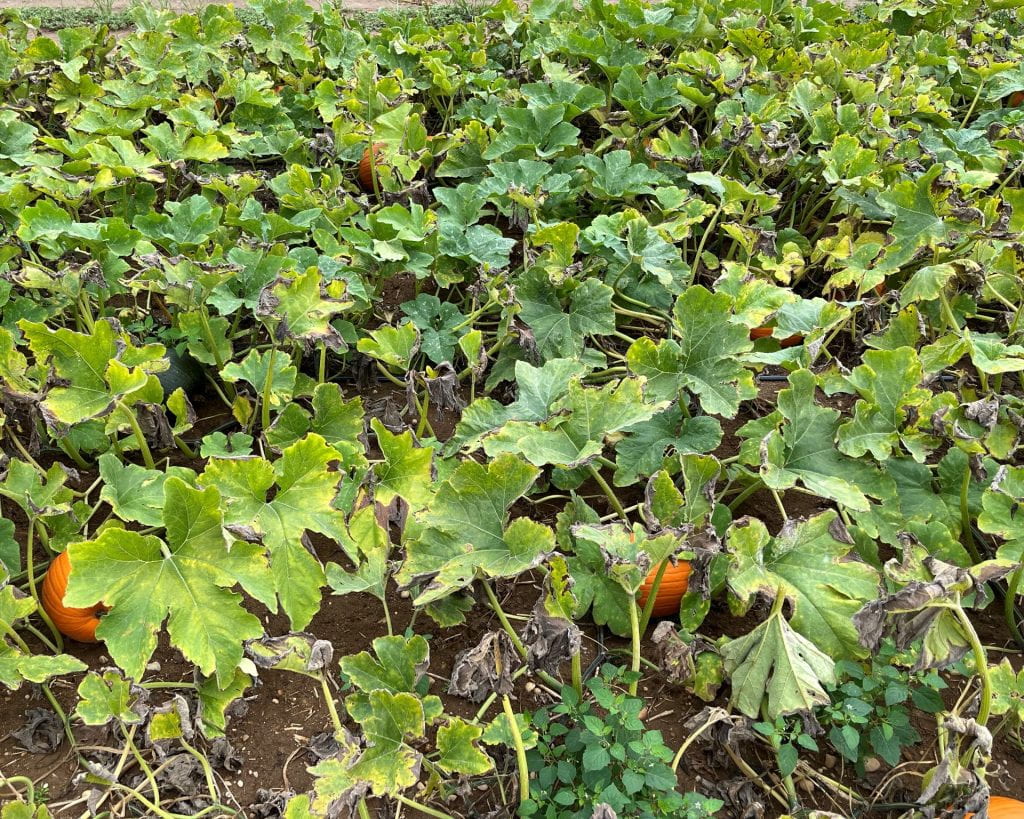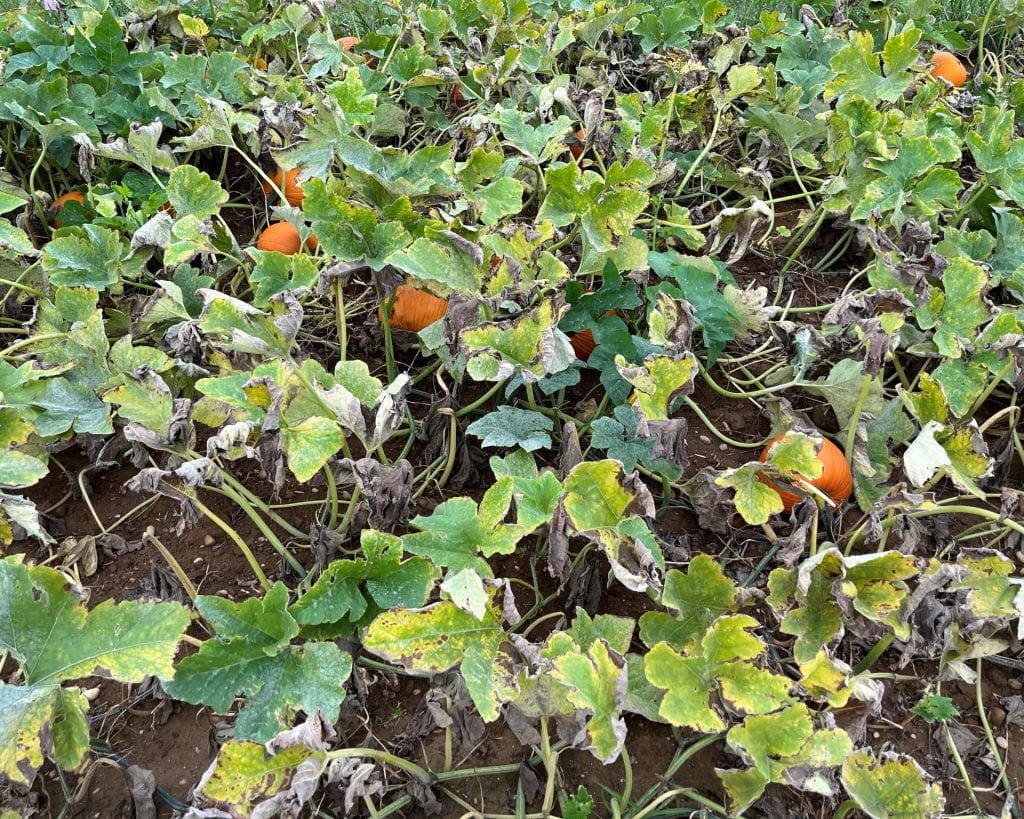‘Bayhorse Gold’, a variety with intermediate resistance to powdery mildew was used; however, it provided limited suppression based on a comparison to severity data for the untreated control plots in an adjacent experiment conducted with ‘Gold Challenger’, a powdery mildew susceptible pumpkin variety.
Biopesticides tested:
- Berezi 3 lb/A and 5 lb/A (product in development)
- Serifel 10 oz/A
- Stargus 87 fl oz/A + Regalia 63 fl oz/A
- Trillium 1%
- Theia 3 lb/A
Compared to an organic non-biopesticide product:
- Microthiol Disperss 5 lb/A
Treatments with a biopesticide applied in alternation with sulfur:
- Stargus + Regalia alt. Microthiol Disperss
- Theia alt. Microthiol Disperss
Powdery mildew was first observed in this experiment on 25 July in seven of the 51 plots on only eight of the 1,020 leaves examined (0.78%). The IPM action threshold recommended to growers for initiating fungicide applications is one out of 50 old leaves with symptoms (2%). Therefore, the first and second applications in this experiment (21-22 and 27 July) are considered to be preventive applications because they were before the threshold and before symptoms typically would be found through routine scouting. On 2 Aug, symptoms were found in 47 of the 51 plots on 100 of 1,020 leaves examined (9.8%). Severity was low throughout August especially on upper leaf surfaces, which may be partly due to some contact activity for powdery mildew of the fungicides applied for Phytophthora blight.
All biopesticides were effective for powdery mildew on upper leaf surfaces but not lower leaf surfaces reflecting their contact activity. There was numerically less defoliation and more pumpkin fruit with good handles in plots treated with biopesticides, but usually not significantly different from the control. Sulfur (Microthiol Disperss), the organic non-biopesticide standard included for comparison, more effectively controlled powdery mildew on upper leaf surfaces than the biopesticides: 99% versus 64-76% control based on AUDPC values (summation of powdery mildew severity over the assessment period: 25 July – 8 September). It provided some control of powdery mildew on lower leaf surface (33%) perhaps partly due to sulfur’s volatility enabling some product to redistribute to lower leaf surfaces. The two programs consisting of biopesticide (Stargus + Regalia or Theia) applied in alternation with sulfur were as effective as sulfur applied weekly (96% and 35-37% control).
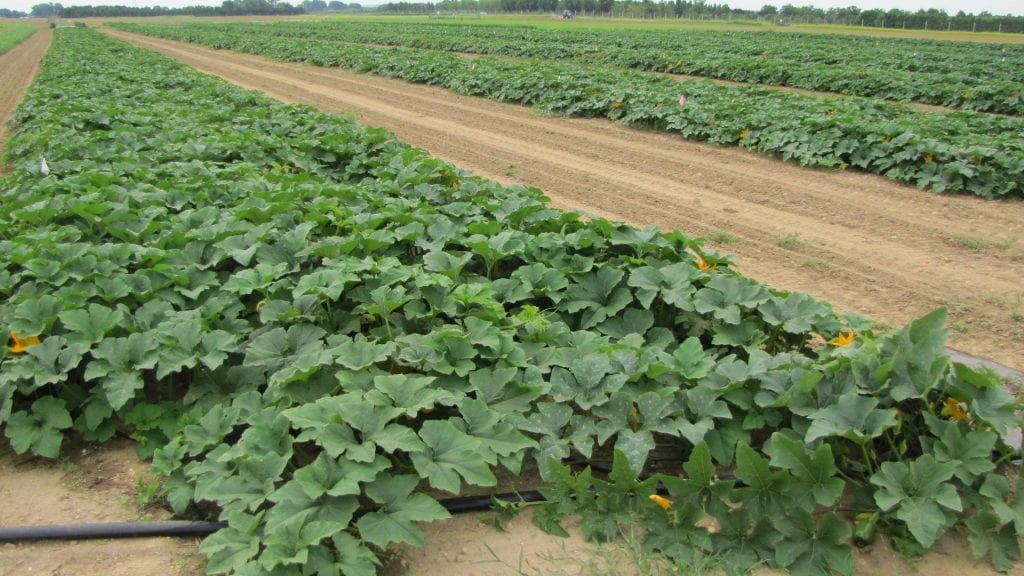
The following plot photos taken on 7 September.
